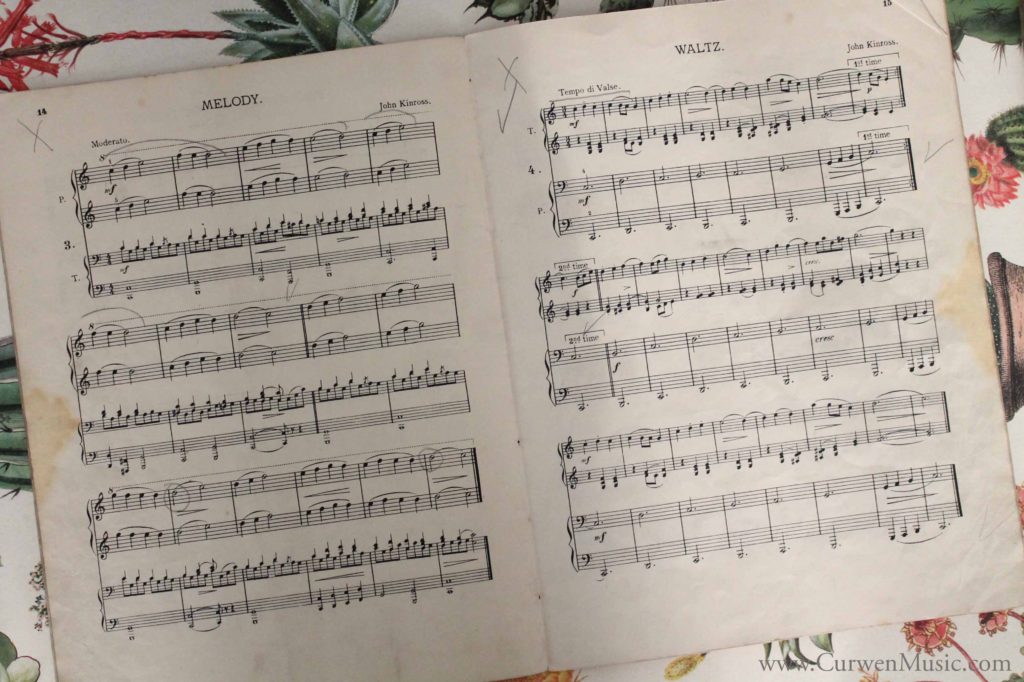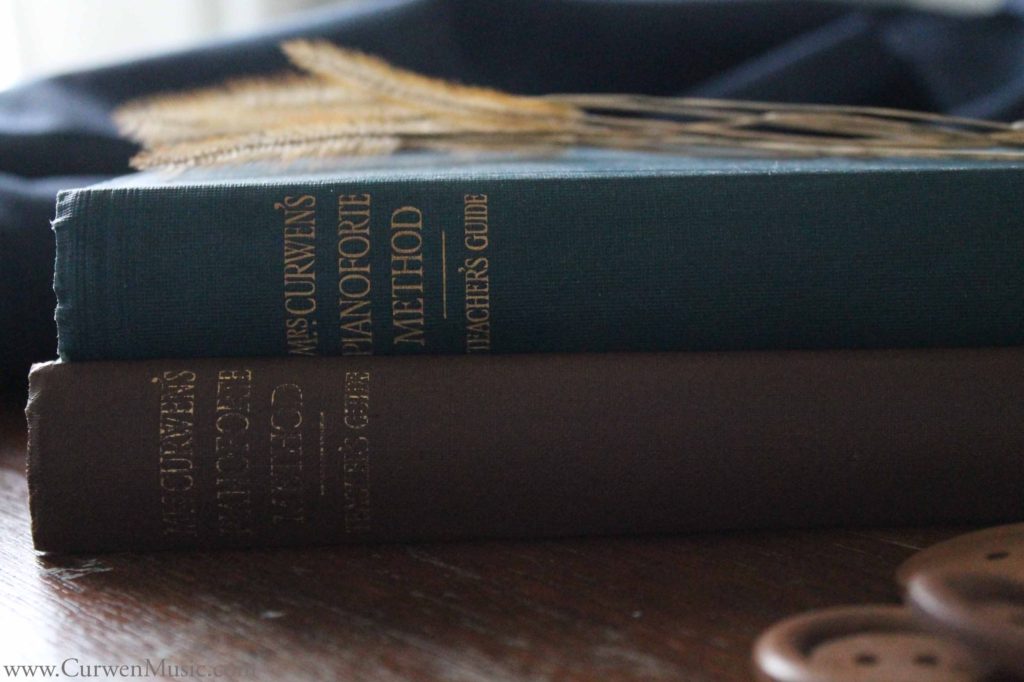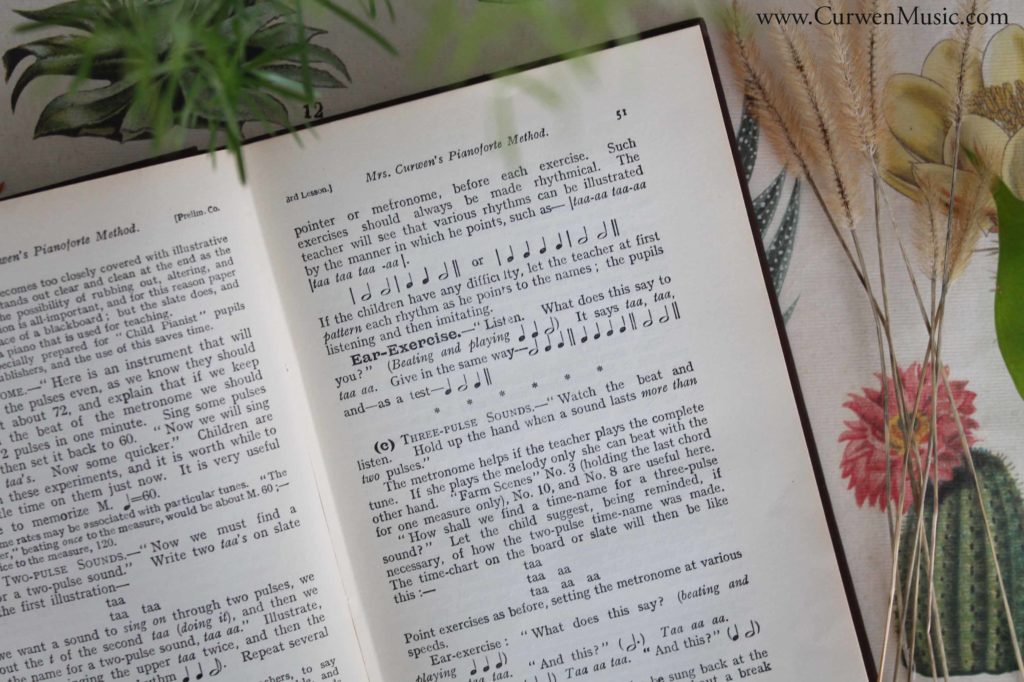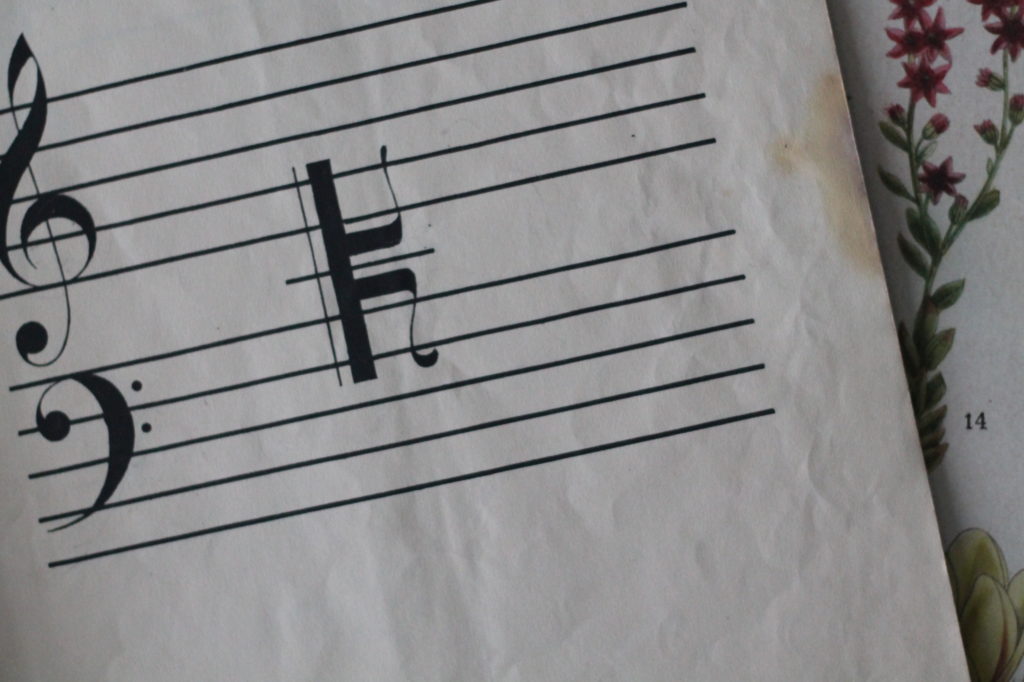Mrs. Curwen had a watchful and observant eye when it came to children. She had their best interest in mind and pointed out some common faults of teachers, including myself, that could be made much better with a little work and thoughtfulness.
Thank you for those who attended and asked questions at our recent sessions. This session was recorded on July 11, 2021. Due to privacy of the participants, I am posting Audio Only.
Thank you for those who attended and asked questions at our recent sessions. This session was recorded on June 29, 2021. Due to privacy of the participants, I am posting Audio Only.
“The unsatisfactory performance of nine-tenths of the young players we hear – pupils of careful and painstaking teachers, who wonder why they do not do better – is due to the lack of ear-training.”
These are the recordings of the duets for the 1st Step book. These are for use with your student when the teacher is not available or able to play the teacher portion of the duet. Hopefully your student can play along with the duet and experience the joy of both parts being played together.
Which edition or reprinted version of the The Teacher’s Guide should you purchase?
In short, I’m not completely sure yet. There are clear differences between the editions I have, but much of the content is the same.
I am asked this question often: How does Mrs. Curwen’s method compare to other piano teaching methods?
I’ll answer this question as best as I can (in a somewhat generic sense). As you compare methods, feel free to graciously comment with your own thoughts and interpretations. I’m curious what you think as well!
I like this piano book. It’s called Pieces for Children by Dimitri Kabalevsky. If you’re looking for additional recreative music for a beginner to intermediate pianist, I think this book is full of songs with character.
What list of assignments would we see if Mrs. Curwen was making a list for her students to practice through the week?
If you are ready to start your students with the 1st Step, but you haven’t studied Mrs. Curwen’s Teacher’s Guide yet, below is a video to get you started. It’s a summary for teaching the 1st Lesson of the 1st Step.
What is the depth and breadth of the content to be taught here? What is the order in which the content should be taught for the best learning? These are the questions I’m hoping to clearly answer here.
Early in Mrs. Curwen’s preliminary courses, the teacher plays piece after piece of music with two pulse, three pulse, and four pulse measure. This gives the opportunity for the student to feel and hear the accented pulse and the following weak pulses.
In the below video, you’ll see the over arching principles Mrs. Curwen uses to teach the staff. It encompasses facets from all five preliminary lessons. This is not something that would be taught in a single lesson. One of the defining traits of her method to teach the staff is her use of the continuous intervals of the thirds.
Mrs. Curwen believed firmly that you “teach the thing before the sign.” In this video, let’s discuss how she applies this idea to the teaching of pulse, measure, and finally the quarter note.
Remember, Mrs. Curwen always draws upon the known to teach the unknown. What does the child know?
The child knows the Sol-fa scale. The child usually can hear and sing doh, ray, me, fah, soh, lah, te, doh. They know what that should sound like. Let them choose a starting sound on the piano (a middle pitch that works for their range) and sing the scale.
Mrs. Curwen had a watchful and observant eye when it came to children. She had their best interest in mind and pointed out some common faults of teachers, including myself, that could be made much better with a little work and thoughtfulness.
Hmm. What a harsh title. The only reason I can pen that title is because I was one of those piano teachers that made the below mentioned mistakes for many years.
Playing Christmas music is such a blessing for a child. Last November, I gave almost every one of my students a Christmas book to play from for the holiday season. Mrs. Curwen has taught me something, though. Christmas music is often hard for beginner pianists to play.
Mrs. Curwen wants children to read music. If they can read the notes on the staff, they can play the songs. If they can play songs, they’re going to continue playing. They’ll find satisfaction and joy in their progress. Much of this begins with reading the staff.
Mrs. Curwen wants the children to understand that the staff is continuous. We have the treble staff and the bass staff, but they are related to each other. We teach them together using the C Clef.
“The sine qua non of reading music is a quick recognition of the written sounds in relation to the keyboard; an unhesitating obedience of the finger to the eye; an obedience so unhesitating and complete that the action of the two is almost simultaneous.” Mrs. Curwen.
We’ll review how Mrs. Curwen shows us how to accomplish this with our students.
Throughout Mrs. Curwen’s book, you see “N.B.” in various places. This is Italian for Nota Bene. It means to take note. She is marking sometime as significant. She wants me, as a piano teacher, to stop for a moment and read carefully.
Here’s a growing list of notes I’m finding as I go.


















